I have been trying for months to figure out how to do this, so hopefully somebody can give me some clarity. I have created an R script that displays all of the values in my database's Genes table. So it gives the length (in nucleotides) of each gene, and I lay it out horizontally.
The main idea was to take values from another table called QGRS, which contains the lengths of each QGRS. The issue I am having is that there are many QGRS's on a single gene, so I can't figure out how to use R to show this. There may be a better way, but my idea was to have the horizontal gene lengths bars be one color, and have the QGRS lengths appear right over those bars as a different color to highlight the QGRS's location on the gene. And this is for all of the genes. I don't understand how to get multiple values over a single bar, and then how to superimpose the two graphs properly.
I hope this makes sense. Here is what I have:
############## Setup for Chromosome Lengths ##############
quartz() #for mac
genes<-read.delim("genes_plot.out", header=FALSE)
sortmat<-genes[order(genes$V2),]
#qgrs<-read.delim("qgrs_plot.out", header=FALSE)
############## Generate Horizontal Genes Plot ##############
par(bg = "darkseagreen1")
png("genes_plot.png", height=1500, width=1000)
barplot( sortmat[,3], names.arg=sortmat[,1], col="red", #genes
horiz=TRUE,
las='1',
main="Human QGRS by Genes",
ylab="",
space=30,
xlab="Length of Gene [# of nucleotides]", )
mtext("Gene ID [RefSeq]", side=0, line=2)
############## Include QGRS over Genes Plot ##############
#par(new=TRUE) #to superimpose the two barplots
#barplot( qgrs[,1] ) #qgrs
############## End ##############
dev.off()
And here is what it outputs [long picture!]:

** Note, the numbers on the left are cut off a bit, I have no idea why... but they are the gene IDs straight from NCBI, just a reference to label them as.
Let me know if more information is needed. Please, any help I would greatly appreciate. I really tried to search for the answers for months (this entire past semester), but I don't think I'm very competent at this. It's too complex for me.
Now I know that I could make another graph for the QGRS but if it was this same way, they would each come out on different lines! So that's not helpful.
Also, my Genes table works like this. I have 5 genes per chromosome, for all the chromosomes in the human genome (24 if you count the X and Y separately). So if needed, the genes graph too could be combined to have only 24 lines and where each line consists of the 5 genes, but I doubt this helps.
--------EDIT------------
Here is sample data from Genes table, the 5 genes for chromosomes 1 and two:
GeneID Chromosome Length [nucleotides]
8682 1 10037
10623 1 18364
441878 1 858
645382 1 2986
650901 1 917
841 2 54268
28949 2 38
80303 2 76724
729992 2 1072
100873329 2 106
And here is sample data from QGRS table [just a few lines for Gene '8682' [first line in above sample data]
Start End Chromosome
389 391 1
524 526 1
739 741 1
834 836 1
904 906 1
